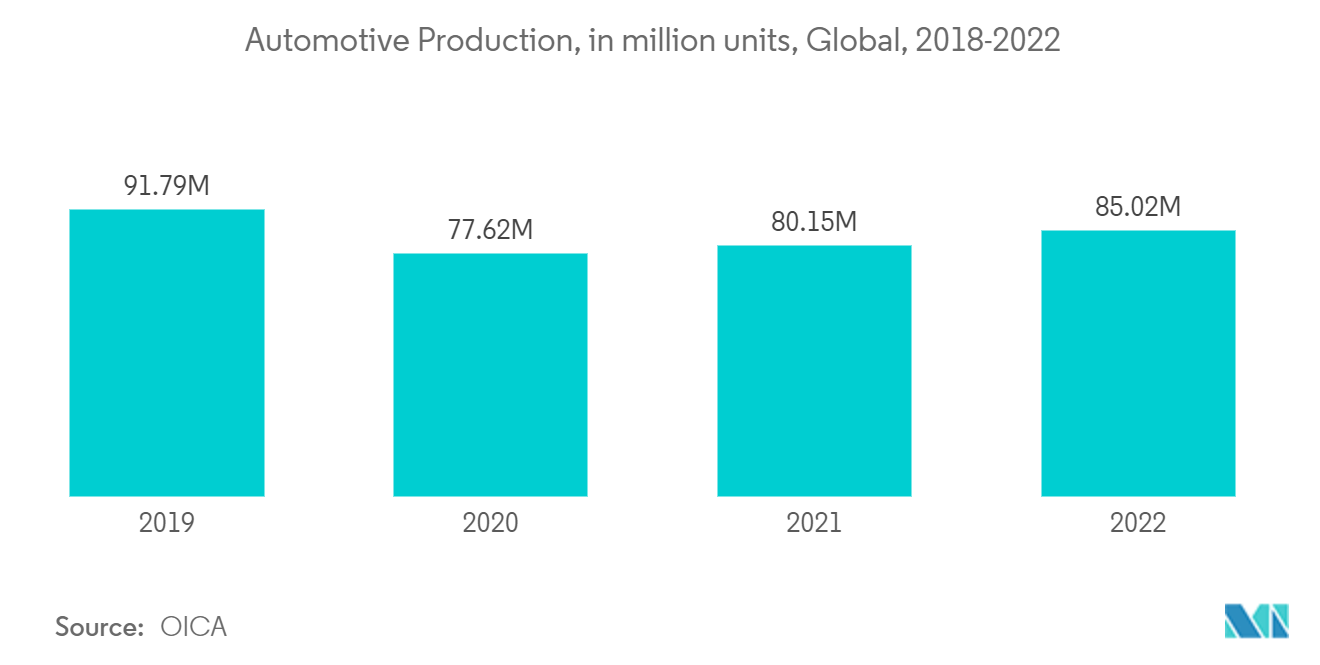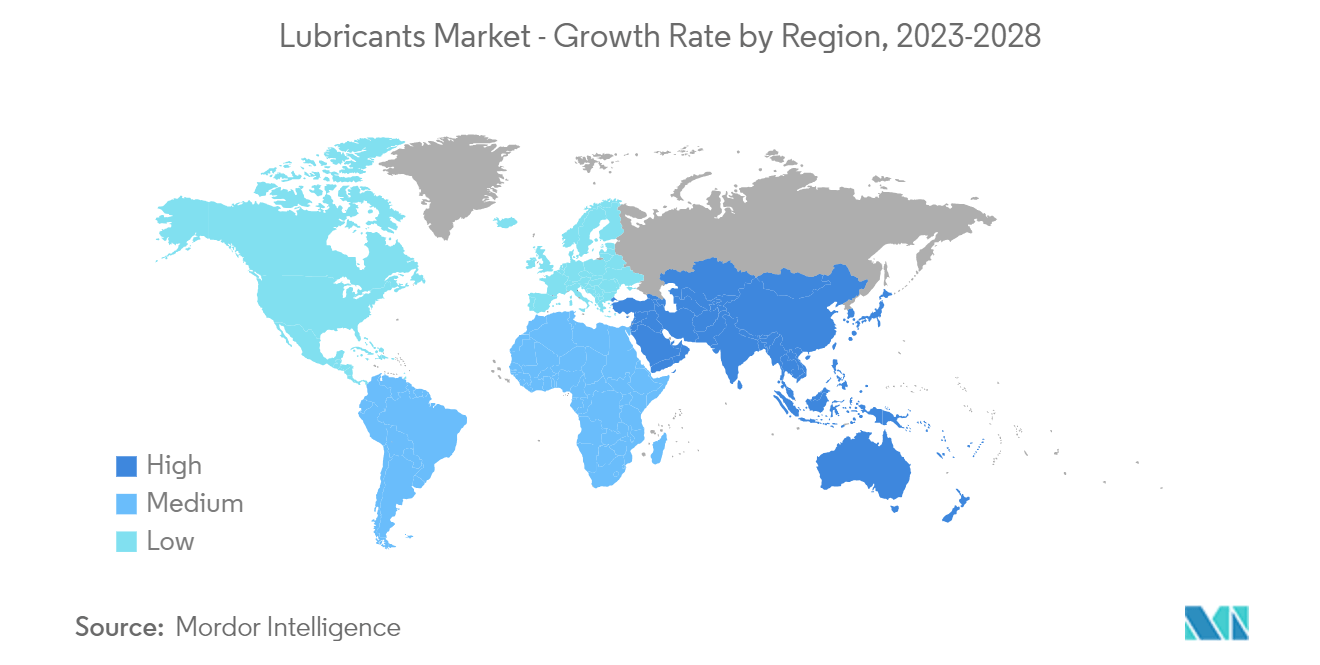Market Trends of Lubricants Industry
Automotive and Other Transportation Segment to Dominate the Market
- Automotive and other transportation media, such as aircraft and marine, are the largest lubricant markets.
- Engine designs are being improved year-on-year to provide a better performance-to-efficiency ratio while also meeting the required environmental emission regulations.
- Light-duty vehicles include two-wheelers and passenger cars. Engine oils, gear oils, transmission oils, greases, and compressor oils are the most widely used lubricants in these automobiles. Lubricants contain a good share in both the OEM and the aftermarket.
- Typical medium-duty trucks include utility, courier, package delivery trucks, ambulances, shuttle buses, school buses, and recreational vehicles. However, straight trucks continue to be the predominant medium-duty chassis.
- Such vehicles usually require medium-duty and high-performance lubricants, as their components, including gears, transmission systems, engines, etc. are exposed to high loads and rapid rubbing.
- According to the International Energy Agency (IEA), globally over 10 million electric cars were sold in 2022. Furthermore, these sales were expected to grow by another 35% in 2023 to reach 14 million.
- According to the International Organization of Motor Vehicle Manufacturers (OICA), the total vehicle units produced in 2022 were 85,016,728 compared to 82,684,788 in 2021.
- All the factors mentioned above are expected to significantly increase the market growth during the forecast period.

Asia-Pacific Region to Dominate the Market
- The Asia-Pacific region dominated the global market share. With the increasing need for wind power and a large automotive production base in countries such as China, India, and Japan, lubricant usage is increasing in the region.
- China is the largest lubricant consumer in the region and the world, followed by the United States. Besides automotive and wind power, chemical manufacturing is another prominent end-user industry in China for the lubricants market.
- However, the electric vehicle industry in South Korea is expected to grow at a rapid rate. The growth of the EV industry is also fueled by the government's aim to electrify 33% of all vehicles by 2030. The number of charging stations for electric vehicles is expected to increase to 15,000 by 2025 to achieve this target.
- According to The Confederation of Indian Industry (CII), programs like Faster Adoption and Manufacturing of Hybrid and Electric Vehicles in India (FAME India), the Production-Linked Incentive (PLI) scheme for the Auto and Auto Component, and the PLI scheme for manufacturing advanced chemistry cell (ACC) batteries helped in fostering local production and boosting EV adoption in India.
- For instance, according to PV Magazine India, annual electric vehicle (EV) sales in India crossed 1.2 million in FY2023, a 174% increase year-on-year. The electric two-wheelers accounted for more than 60% of the overall electric vehicle (EV) units sold in the country.
- Furthermore, owing to the growing interest of the economies towards renewable energies such as wind energy, the new offshore wind installation volume in the Asia-Pacific is expected to grow significantly. For instance, according to the Global Wind Energy Council (GWEC), the region's new offshore wind installation volume would grow by 225.4% by 2029 compared to 2022. It will substantially boost the wind power industry's demand for lubricants during the forecast period.
- The factors mentioned above will likely increase lubricant consumption in the Asia-Pacific region during the forecast period, maintaining the region's dominance over the market.


